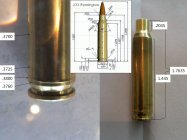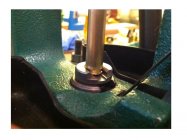This is a new one for me so looking for some opinions as to the cause and meaning. I have seen the thin ring at the bottom of cases as they reach the end of their life and always take that as a sign of a potential case separation about to happen so I cull the cases. If you look at the photo, you can see that the ring is raised. When I feel the inside of the case with a bent paper clip and look at the inside under magnification, there is no thinning signs present at the location of the raised ring. Also, there are no signs of crazing or cracking.
-Lapua brass
-fired 6 times. 25% of that batch of cases (86 cases) had this, the others looked fine
-23.9 grains Varget under 77 gain burger bullets, .001" off the lands (stony point tool)
-Fired from an AR15 mil spec chamber
-Full length resized with RCBS die after each firing
What is it? What's the cause? What's the solution?
I am not using these, but want to prevent it in the future.
-Lapua brass
-fired 6 times. 25% of that batch of cases (86 cases) had this, the others looked fine
-23.9 grains Varget under 77 gain burger bullets, .001" off the lands (stony point tool)
-Fired from an AR15 mil spec chamber
-Full length resized with RCBS die after each firing
What is it? What's the cause? What's the solution?
I am not using these, but want to prevent it in the future.

















